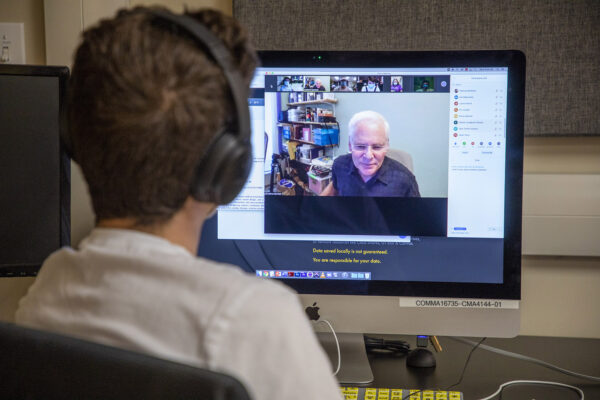In the wake of the COVID-19 pandemic, universities across the world pivoted to virtual learning, and a host of negative consequences quickly followed. Virtual learning exhausts students, exacerbates social class differences and mirrors the gender inequities that exist in in-person classes.
And yet for all its drawbacks, virtual learning has an equalizing power that is undeniable. More institutions of higher learning must leverage many of the features that virtual learning provides to reduce bias and increase accessibility and inclusion for students, and to improve learning outcomes in ways not possible in person.
In a physical classroom, the professor is at the podium and students choose their seats in the classroom. This may result in unconscious biases in both the professor and students about various students’ (front row or back benchers) abilities and motivations, creating the harmful Pygmalion effect with disparate effects on learning outcomes.
In a virtual setting, the teacher and students have the same class status and, importantly, cannot elect to be in any one seat, because the technology dynamically assigns seats, and these seats also change during the virtual class. Professors can use virtual learning etiquette rules and features such as chat windows and mute buttons, as well as the raising of electronic hands (and waiting for one’s turn to speak), to democratize classrooms. By using audio-only mode, teachers can also eliminate pernicious issues related to disabilities, including stuttering. Such issues are widely prevalent in in-person classrooms and harm learning outcomes.
Virtual learning also enables students to bring their full selves to the virtual classroom. In physical classrooms, professors of classes of more than 100 students find it challenging, if not nearly impossible, to know students’ names, to correctly pronounce them and to use correct pronouns. In virtual learning environments, technologies can be used to show students’ profile pictures, names, titles, pronouns and pronunciations. All of this enables students to bring their full identities into the open, enhancing their engagement and learning outcomes.
It also eliminates differences that hinder in-person learning. In in-person classrooms, students’ races and ethnicities; physical characteristics such as height, weight and disability; personality differences such as introversion and extroversion; and cognitive differences, such as autism spectrum or bipolar diagnoses, are more visible. This can create unconscious biases that can negatively affect student learning.
In virtual classes, visible differences in these categories are reduced and, in some cases, even eliminated. For example, introverts can engage fully through technology tools, including chat windows and response buttons. Moreover, through the creative use of free virtual backgrounds, faculty can eliminate surface-level differences among students in virtual classrooms that are conspicuous in in-person classrooms.
In-person classes are, by definition, at given geographic coordinates at a given time, making it difficult for students who have full-time jobs and family care responsibilities to attend classes, reducing access for those students. Teachers can use asynchronous class recordings and transcriptions of virtual classes to dramatically increase accessibility for such students.
And that’s not all. In-person events for professional networking for students and faculty entail substantial costs, such as registration fees, travel costs (exacerbated by asymmetric foreign exchange rates) and visa expenses. Virtual events, at much lower cost to both organizers and participants, increase access, previously constrained by geography and budgets, by leaps and bounds.
There are certainly drawbacks with virtual learning, but it also has a remarkable equalizing power, which can be leveraged by institutions of higher learning to reduce long-standing inequities. It is exceptionally fortunate that higher education institutions can achieve such an aspirational goal during a dispiriting worldwide pandemic. And it is upon colleges and universities to seize the moment.
And, when the pandemic crisis is over, we would be wise to hold on to the positive aspects of virtual learning that we have discovered, and to use it to create a new paradigm for higher education that is truly inclusive, unabashedly equitable and wholeheartedly accessible to all.
Raji Srinivasan is the associate dean for diversity and inclusion in the McCombs School of Business at The University of Texas at Austin.
A version of this op-ed appeared in the San Antonio Express News, Austin American Statesman and the Abilene Reporter News.




